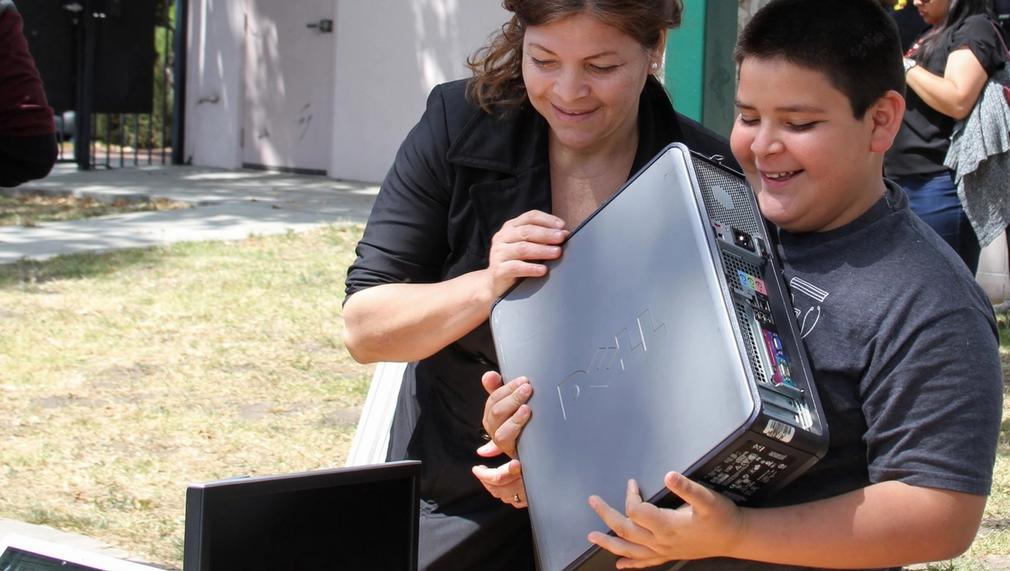#include
human-I-T provides low-income individuals & nonprofits with technology, internet, and digital literacy training. We collect used electronics from companies to refurbish and more people are provided with computers/laptops and the skills needed to use the technology effectively. We will provide Angelenos with the means to learn how to use the internet through digital literacy courses, provide them with a laptop and support in getting low-cost internet.

In which areas of Los Angeles will you be directly working?
East LA
San Gabriel Valley
San Fernando Valley
South LA
South Bay
County of Los Angeles
City of Los Angeles
LAUSD (please select only if you have a district-wide partnership or project)
In what stage of innovation is this project?
Expand existing program
What is the need you’re responding to?
Despite California being the birthplace of the internet, substantial disparities persist in who does and does not have access to technology in the Golden State. This “digital divide” disproportionately affects low-income individuals and people of color. In Los Angeles County, 24% of the population does not have a computer with internet access at home. This means approximately 2.5 million people are cut off from tools for self-sufficiency. More recently, in light of the global pandemic, there is also a growing increase in remote learning. Still, 1 in 4 students do not have the proper access to the internet or home device to participate.
Why is this project important to the work of your organization?
human-I-T’s Include program is designed to help adult learners harness all of the opportunity that lives online. It is a self-paced, student-centered digital literacy class offered in English and Spanish. Because learners enter digital literacy training with different needs, goals, and motivations, the course allows each individual to choose which lessons to study, and how much time to devote to each topic. human-I-T works with community partners to create satellite sites (either live sites or remote hubs) where digital literacy classes can take place in a computer lab setting, or individuals can complete the course from the comfort of their own home.
human-I-T is the only nonprofit in Southern California that collects electronic waste from companies, refurbishes it, and redistributes it to low income households and community centers. Other organizations that take in e-waste either 1) break the devices down for commodities or 2) re purpose the device for resale on the market.
Approximately how many people will be impacted by this proposal?
Direct Impact: 1,000
Indirect Impact: 4,000
Please describe the broader impact of your proposal.
Through the #include program there are various ways that our city will change, but one of the most important ways will be at home. One in four students do not have the necessary hardware or internet to connect only, that means 1 in 4 families does not have everything they need to connect online. Through #include, parents and older family members will learn the basics of using a computer and be able to access online resources they never had before. At the same time, children will be able to connect online without the need of going long distance or staying long hours in the library to do so. Families around LA County would be taking the future into their own hands and becoming self-sufficient.
Please explain how you will define and measure success for your project.
e track several outputs to gauge the effectiveness of our programs, including the number of computers donated, households connected to the internet, individuals who have completed our digital literacy training program, and the pounds of e-waste diverted from landfills. We define success as educating 1,400 individuals through our digital literacy program with the support of our satellite partners. Another measure in 2020 will be connecting 15,000 households to free or low-cost internet.
Beyond the numbers, we use qualitative data to gauge the programs’ success through post-donation surveys to measure how each connection makes an impact on users’ lives. We collect data about how many households use the device to apply to college, find affordable housing, secure new jobs, establish permanent residency, increase their social network, and access social services. Success is achieved when over 95% of recipients use their connection in a way to deepen their presence in their community, whether through education, civic engagement, housing, or participation in grassroots organizing.
Which of the CONNECT metrics will your submission impact?
Internet access
LGBTQ+ equity and inclusion
Disability access and inclusion
Which of LA2050’s resources will be of the most value to you?
Access to the LA2050 community
Communications support
Strategy assistance and implementation